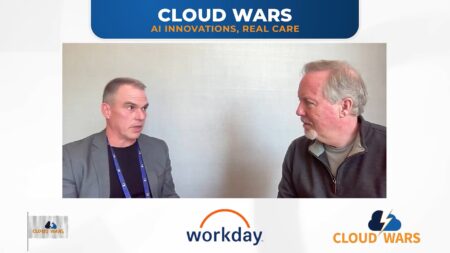Keeping data safe and secure is critical in today’s digital workplace. Deciding where to store this data isn’t always easy due to the growing variety of options available. From terms like “data lake,” “database,” and “data warehouse,” each come with different functionalities, implementation timeframes, and associated costs. From a CFO’s perspective, the wrong choice can impact your business capacity, operative functions, and create technical debt. Up ahead, we discuss the differences in these solutions to empower The Future Office of the CFO to match available data storage options with organizational acceleration goals.
What Are Databases?
A database is software that keeps and manages all of the data on a device, and it also includes information within the database. Developers often use the term to mean a collection of information.
Most users rarely understand where the values are located and usually label the entire system as the database. The relational database is often the backbone for corporate computing. It organizes data in rows and columns to create tables, as these tables are simplified by into several tables and sub-tables. Always including indexes in a relational database helps make it easier to search these tables much quicker. Employing SQL for simplifying repeated elements can help to create concise reports as fast as possible.
Recently, non-relational types of databases have increased in popularity. Developers often use these databases in need of flexibility to create elements or fields for specific entries.
What are Data Warehouses?
The data warehouse includes various databases, while some organizations may use less structured formats for managing raw log files. The use of data warehouses became a necessity due to organizations creating long-term storage options for collecting information that accumulates each day while also allowing them to report and further analyze this information.
Creating a data warehouse isn’t simply implementing a database and structure for tables, as it also requires the creation of retention policies. Many data warehouses include complex analytics to create detailed statistics for studying changes over time. A data warehouse is often closely integrated with graphics that can easily create infographics to highlight changes in data.
Generally, a data warehouse describes a relatively complex system that orders the data before storing this information.
What is a Data Lake?
A data lake uses a different method to creating long-term storage from a data warehouse. Often in modern data processing, a data lake will keep raw data to allow flexibility for future modeling and analysis. On the other hand, a data warehouse only uses a relational schema to the data before it’s stored. A data lake might not use databases to keep this information because the extra processing power required isn’t worth it. All of this data is stored in logs or flat files.
Data lakes are an excellent option for storing large amounts of records that may need to be accessed in the future. Many times this is required due to regulatory compliance. Sometimes the raw data is stored in a data lake, and it eventually reaches a data warehouse once it’s analyzed.
Examples of Different Types of Data
Data lakes, warehouses, and databases often take numerous forms because companies have different requirements for keeping up with historical records. The other choices businesses make will impact the architecture and structure of the data.
Here is a list of a few of the most common examples of storing data in different industries.
Drop-Shipping Businesses
A drop-shipping company sells a variety of items online while also outsourcing order fulfillment. Most drop-shipping companies will use a basic database for tracking orders while deleting these records once the orders are delivered. The products available from drop-shipping businesses are constantly changing, as they don’t need to track historical data.
IT Security Group
Keeping up with data is critical to network security. All of the different routers and servers collect a large amount of raw data about the different packets moving across the network. Tracking these packets is vital for identifying any unusual activity on the network. These raw values are kept in a big data lake for a few weeks until they are no longer of any use. Many times this data is disposed of without being analyzed if nothing unusual happens during this time frame.
Manufacturing Companies
Manufacturing businesses need to make well-informed decisions related to long-term trends regarding sales and pricing. Comparing sales by region over an extended period of time is essential for managing plants and warehouses across the country. Using a complex data warehouse to handle these specific queries makes it much easier to manage a supply chain for a manufacturing company.
Medical Office
A medical office must follow detailed regulations to ensure patient information remains private. A particular service is often used to store these records while making long-term retrieval possible in future queries. Using this service is similar to a data lake, as it stores information that can be retrieved at a future time, but it doesn’t offer analysis capabilities.
Pharmaceutical Company
A pharmaceutical company needs to gather raw data related to drug trials while also complying this information into aggregated reports due to regulation. Keeping this data on file for the long term is necessary for aiding future researchers while also complying with regulators. Using a data lake makes it possible to collect this raw information while a warehouse is needed to store these aggregated reports.
What are Legacy Companies Doing With Data?
Understanding what legacy companies are doing with all of this data helps keep up with the latest industry trends. For example, some organizations are adding new features to traditional databases, making it easier to support analysis. These companies are also creating extensive cloud storage with comparable features to allow businesses to outsource cloud storage.
Microsoft Azure is using “Synapse Analytics” to migrate data warehouse work. Using this technology makes it possible to integrate cloud storage with different routines, including artificial intelligence. Synapse Analytics is designed to handle petabytes of data while using Apache Spark and other similar tools to transform and analyze large amounts of data. Microsoft also separates the billing for computation and storage, as businesses can save money by turning off analytics.
Oracle also provides an Autonomous Data Warehouse for on-premises and cloud technology that easily integrates into its database while giving you access to various tools for enhancing analytics. Using this service hides all of the functions for scaling, patching, and securing the data. Other options are available that resemble the functions of a data lake, such as Apache Spark.
IBM cloud services are available for any users of IBM’s Db2 that need to create a data warehouse. This tool includes machine learning, parallel processing analytics, and statistical routines with migration tools for combining data sources.
What are Startups Doing With Data?
Many in-house development teams build data lakes and warehouses on-premise while using an existing database to build custom infrastructure for handling larger and more complicated queries. Generally, the lake or warehouse is designed to create a strong historical record for making long-term analyses.
Cloud companies provide two different options, such as giving you the flexibility to choose from several cloud storage solution plans at various prices. These cloud companies combine their analytic tools with their storage options to transform their racks into data lakes or warehouses.
Closing Thoughts on Data Storage
Understanding all of the different terminology related to data is essential in finding the best option to meet the needs of your business. Learning about the available choices will help you understand how to effectively use your data to improve your business operations, stay in compliance, and meet the needs of your consumer base.







